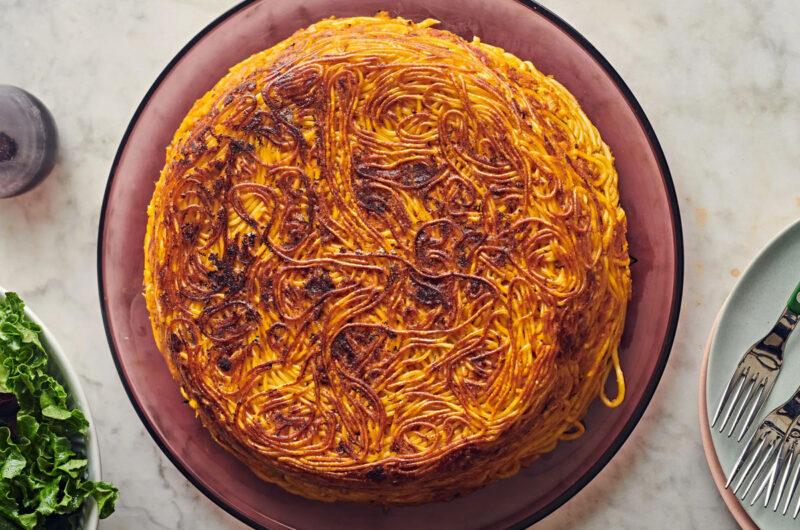© All Rights Reserved.
Persian macaroni recipe, Delicious Persian style spaghetti or reshteh farangi in 12 steps
Persian macaroni is one of the most popular foods in Iran, and is known as an international food all over the world.
We have brought to you in the Cookery Magazine Everything you want to know about the history of Persian macaroni in Iran and all over the world, from its ingredients till its cooking, .
Have you heard anything about the history of Persian macaroni? When it comes to the story of the origin of macaroni, some people say that you have to walk in Italian restaurants to hear its story, but we say let’s travel further afield, for example to the Far East and to China, to find the origin of the story and the secret behind this love story.
Ingredients for making Persian macaroni with Minced meat
| Pasta (spaghetti) | 500 grams |
| Minced meat | 200 grams |
| Onion | 1 large piece |
| Mushrooms | 100 grams |
| Potatoes | 2 large pcs |
| Peas | 100 grams |
| Bell pepper | 1 piece |
| Tomato paste | 3 tablespoons |
| Salt and black pepper | As much as needed |
| Turmeric and liquid oil | As much as needed |
Recipe for making Persian macaroni
The first step in preparing Persian macaroni
To prepare Persian macaroni, we must first prepare the pasta sauce, For this purpose, we chop the onion into small gems, then fry it with some liquid oil in a suitable pan until the onion becomes soft and light and its color changes into golden.
The second step for making Persian macaroni
Next, we add some turmeric to the hot onion, then continue frying again until the onion and turmeric become uniform.
At this stage, we add the minced meat to the onion and fry well until the meat changes color.
The third step for making Persian macaroni
Meanwhile, after washing, chop the bell pepper and mushrooms as desired and add them to the pan along with the peas.
We fry the peas, mushrooms, and bell peppers a little, then add the tomato paste to the pan.
Note: Be sure to remove the thin skins on the mushrooms before chopping them.
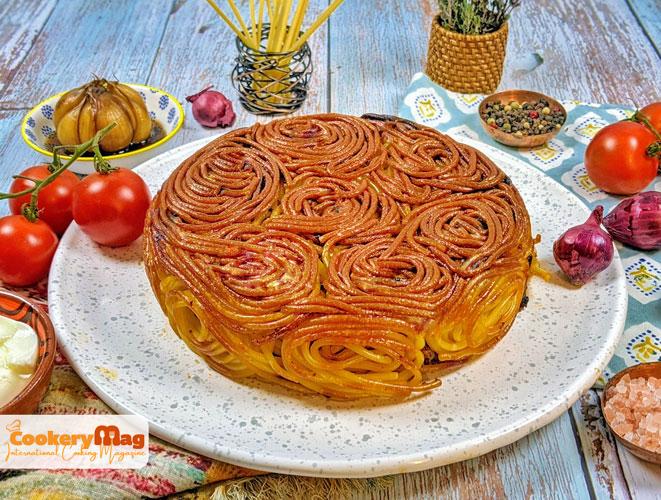
The fourth step in preparing Persian macaroni
We fry the tomato paste well to get its raw taste and smell, in addition, roasting the paste makes us have a more colorful pasta at the end of cooking.
After roasting the tomato paste, add 1 glass of water and cover the pan so that the meat cooks slowly.
The fifth step for making Persian macaroni
Every few minutes, we stir the ingredients of the pasta sauce and mix a little so that it does not stick. When the water in the pan evaporates, the sauce is ready. After the pasta sauce is ready, take it off the heat and set it aside.
The sixth stage in preparing Persian macaroni
At this stage, we fill a pot halfway with water, and then put it on high heat so that the water boils quickly. Next, pour some salt and liquid oil into the pot and let the water in the pot boil.
The seventh stage for making Persian macaroni
After the water boils, put the pasta in the water, then let the persian macaroni soften a little, then remove it from the boiling water and rinse with cold water.
The exact time to rinse the pasta is when the edges of the pasta are soft and the core is hard.
The eighth stage in preparing Persian macaroni
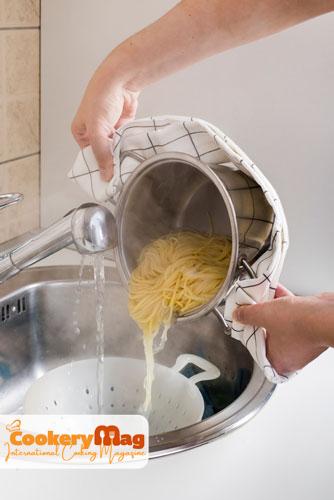
As a general rule, you should take the macaroni a little bit soon, when it is fresh, in order that it is not crushed or too soft after cooking.
At this stage, heat the pot that you have planned for cooking pasta and pour a little oil into it.
The ninth stage for making Persian macaroni
Next, cut the potato into slices (not too thick that it becomes soft, not too thin that it burns) and put it on the bottom of the pot as Tahdig.
Let the potatoes fry a little, then pour some of the drained pasta on the potatoes.
The tenth step
After covering the potatoes with pasta, we add a little pasta sauce, and in the same way, we fill the pot with layers of drained Persian macaroni and macaroni sauce. Note that the last layer must be macaroni.
The eleventh step
At the end, we put the lid on the pot and increase the heat so that the steam in the pot wraps, Then we reduce the heat and let the pasta cook with a gentle heat. It takes about an hour for the pasta to brew.
The twelfth step for making Persian macaroni
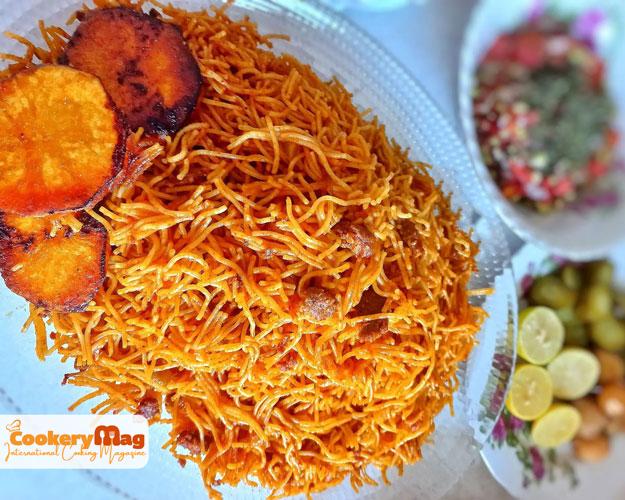
After the pasta is ready, we mix it in the pot so that the sauce reaches all the points of the pasta, then we add a little oil to it if desired.
After putting the Persian macaroni in the desired and suitable dish, you can use golden potatoes to decorate it.
Persian macaroni with soybean
If you want to make Persian macaroni with *soybean, about 100 grams of soybean is enough for the above ingredients. Soak soybeans in a bowl of lukewarm water for 30 minutes until soft.
After 30 minutes, squeeze the soy water with your hand, then add it to the onion and fry until the raw taste of the soy is removed. Continue cooking as above.
Having a journey in the history of Persian Macaroni
According to the American National Pasta Association, the invention of these fields dates back and is related to the events that happened 3000 years ago.
It is said that for the first time, a Chinese woman was preparing bread dough when she lost her concentration while talking to an Italian sailor, The dough container turned and all the dough spilled on the table and hung from the table in the form of a string.
When the sun shines on them, the pastes dry in the form of strings and become the food that we call pasta, macaroni, or spaghetti today.
The amazing part of the story is that maybe there was a love story in between; Because these two people decide to keep the secret of the creation of these strings a secret between themselves and put the name of the sailor on these fields.
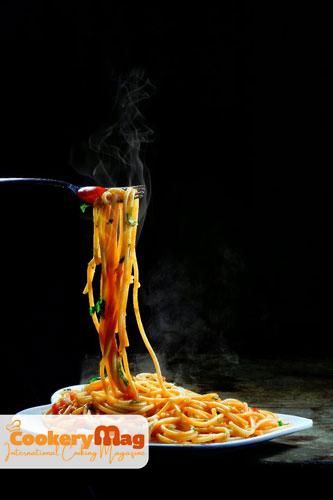
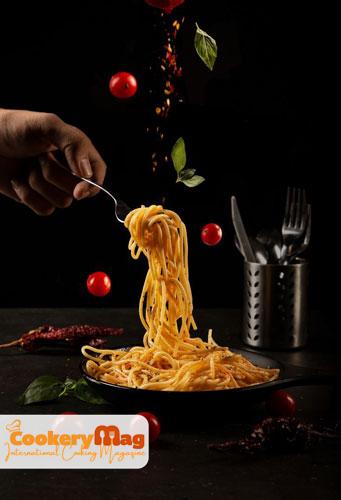
You guessed it right, his name was “spaghetti” and because his name is an Italian name, it confuses the minds for the origin of pasta; So it was the spark of an accidental love that gave birth to the pasta by the Chinese woman.
In the meantime, Mr. Spaghetti did not keep it a secret and took the macaroni recipe with him to Italy, which was very well received and made Italy known in the world as the origin of this amazing dish, although history never forgets the truth.
Due to its geographical conditions, Iran has always been a link between the East and the West, so we benefit from the existence of Persian macaroni ,this delicious food, in our country.
Since Iranians have always had a hand in cooking and Persian macaroni, especially macaroni is a food that can be transformed into a different food with individual creativity, Persian macaroni spread in Iran very quickly.
The first macaroni-making workshop in our country started working in 1313 AH equivalent to 1934 AD with basic and simple machines.
The pasta and macaroni produced in these workshops were only available to embassies and they say that is why it was also known as reshteh farangi (رشته فرنگی).
Persian Macaroni (in English: macaroni, in Italian: maccheroni) is a type of dry pasta that is traditionally formed and produced in various shapes and sizes and has different flavors and colors.
Also, some have understood the Italian word ammaccare to mean “crushed or kneaded dough”. But in Sanskrit, its root comes from the word “Macaroni”.
In Italian, maccheroni refers to long pasta, not necessarily tubular. In Brazilian Portuguese, Estonian, Greek, Iranian, Russian, Ukrainian, and other Slavic languages, as well as Arabic, Turkish, Kazakh, Azerbaijani, Uzbek, Kyrgyz, and other Turkish languages, and some Italian-American dialects, the word is used as a generic term.
It is used for all types of pasta. In Iran, the word “macaroni” or “Persian macaroni” is used synonymously with pasta and is widely used for all kinds of spaghetti and patterned pasta, etc. Iranians also have a type of roasted pasta called Tahdig Macarooni, which is very popular.
Many types of macaronies sometimes differ from each other due to the texture of each pasta: for example, Rigatony and Tortiglioni have ridges along their length, while chifferi, lumache, lumaconi, Pepe, Farfalle (also known as bowties), etc. refer to patterned and shaped macaroni.
Pasta and Persian macaroni are the most popular foods in Iran and have many fans of all ages. Also, pasta and macaroni, are the second most popular food in the world, that is actually made by the Chinese.
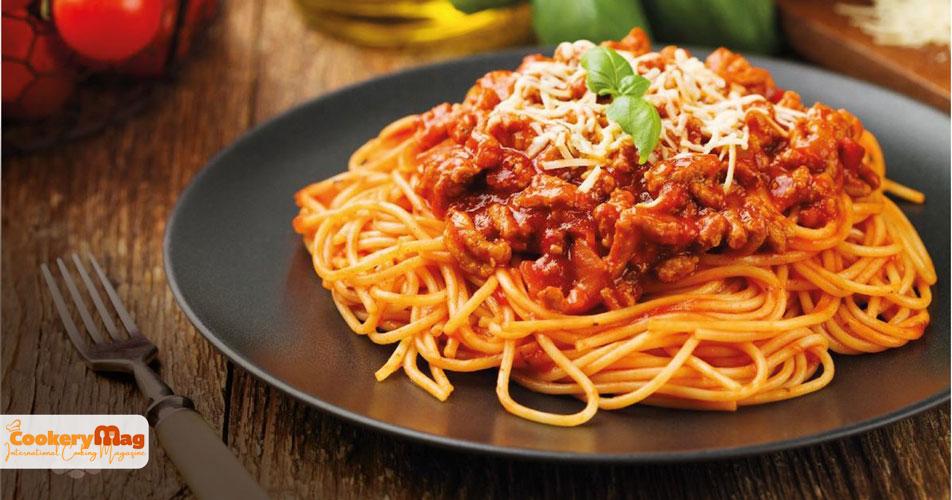
Macaroni or Persian macaroni is a type of pasta. This edible substance is mostly produced dry in factories and boiled before eating. The meaning and shape of pasta is different in every country or region.
In Japan, it is mostly called a type of pasta that looks like a short rod with holes or in the shape of a shell or various other designs.
In Italy, macaroni refers to a type of pasta in the form of a short perforated rod.
In Iran, Persian macaroni is called both macarani and macaroni; Also, the word “macaroni” is synonymous with pasta and widely used for all kinds of spaghetti and patterned pasta, etc.
Iranians also have a type of roasted pasta called Tahdig Macaroni, which is very popular.
The best pasta is made from durum wheat semolina.
Semolina is the result of grinding durum wheat (Triticum genus and Durum species).
Of course, other wheats are also used to prepare pasta flour.
It is worth noting that according to Italian laws, pasta can only be made from durum wheat flour or semolina flour.
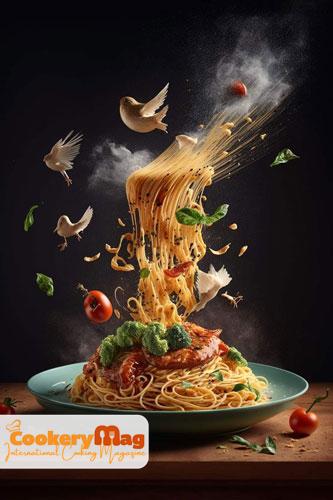
Pasta vs. Spaghetti
Similarity
- Spaghetti and macaroni are both sub-branches of pasta and are made from semolina flour.
Differences
- To make spaghetti and Persian macaroni, the dough is made into long strands, but pasta has a meaning depending on the region and country, and some of its shapes are small hollow tubes, snails, spirals, bow ties, etc.
Frequently Asked Questions about Persian macaroni
What is macaroni?
macaroni is one of the types of pasta and this food item is produced dry in factories and boiled before eating, and the cooking time is different in each country. The shape of macaroni is also different in every country and region.
The first macaroni factory in the world belongs to which country?
The first macaroni factory was opened in America; This factory started its activity in 1789.
Persian macaroni
Course: Main CourseCuisine: Persian foodDifficulty: Difficult4
servings30
minutes30
minutes300
kcalIngredients
Pasta (spaghetti), 500 grams
Minced meat, 200 grams
Onion, 1 large piece
Mushrooms, 100 grams
Potatoes, 2 large pcs
Peas, 100 grams
Bell pepper, 1 piece
Tomato paste, 3 tablespoons
Salt and black pepper, As much as needed
Turmeric and liquid oil, As much as needed
Directions
- The first step in preparing Persian macaroni
To prepare Persian macaroni, we must first prepare the pasta sauce, For this purpose, we chop the onion into small gems, then fry it with some liquid oil in a suitable pan until the onion becomes soft and light and its color changes into golden. - The second step
Next, we add some turmeric to the hot onion, then continue frying again until the onion and turmeric become uniform.
At this stage, we add the minced meat to the onion and fry well until the meat changes color. - The third step
Meanwhile, after washing, chop the bell pepper and mushrooms as desired and add them to the pan along with the peas.
We fry the peas, mushrooms, and bell peppers a little, then add the tomato paste to the pan.
Note: Be sure to remove the thin skins on the mushrooms before chopping them. - The fourth step in preparing Persian macaroni
We fry the tomato paste well to get its raw taste and smell, in addition, roasting the paste makes us have a more colorful pasta at the end of cooking.
After roasting the tomato paste, add 1 glass of water and cover the pan so that the meat cooks slowly. - The fifth step
Every few minutes, we stir the ingredients of the pasta sauce and mix a little so that it does not stick. When the water in the pan evaporates, the sauce is ready. After the pasta sauce is ready, take it off the heat and set it aside. - The sixth stage in preparing Persian macaroni
At this stage, we fill a pot halfway with water, and then put it on high heat so that the water boils quickly. Next, pour some salt and liquid oil into the pot and let the water in the pot boil. - The seventh stage
After the water boils, put the pasta in the water, then let the pasta soften a little, then remove it from the boiling water and rinse with cold water.
The exact time to rinse the pasta is when the edges of the pasta are soft and the core is hard. - The eighth stage in preparing Persian macaroni
As a general rule, you should take the macaroni a little bit soon, when it is fresh, in order that it is not crushed or too soft after cooking.
At this stage, heat the pot that you have planned for cooking pasta and pour a little oil into it. - The ninth stage
Next, cut the potato into slices (not too thick that it becomes soft, not too thin that it burns) and put it on the bottom of the pot as Tahdig.
Let the potatoes fry a little, then pour some of the drained pasta on the potatoes. - The tenth step
After covering the potatoes with pasta, we add a little pasta sauce, and in the same way, we fill the pot with layers of drained Persian macaroni and macaroni sauce. Note that the last layer must be macaroni. - The eleventh step
At the end, we put the lid on the pot and increase the heat so that the steam in the pot wraps, Then we reduce the heat and let the pasta cook with a gentle heat. It takes about an hour for the pasta to brew. - The twelfth step
After the pasta is ready, we mix it in the pot so that the sauce reaches all the points of the pasta, then we add a little oil to it if desired.
After putting the Persian macaroni in the desired and suitable dish, you can use golden potatoes to decorate it.
Conclusion of Persian macaroni
Thank you for being with us in cooking Persian macaroni; this challenging food with many legends and stories behind its global name.
If you have any more questions, it’s my honor to answer. Enjoy your exploration of Persian cuisine!
Please share this article with your friends on Facebook, Twitter, Pinterest, and other social media. 🧡


